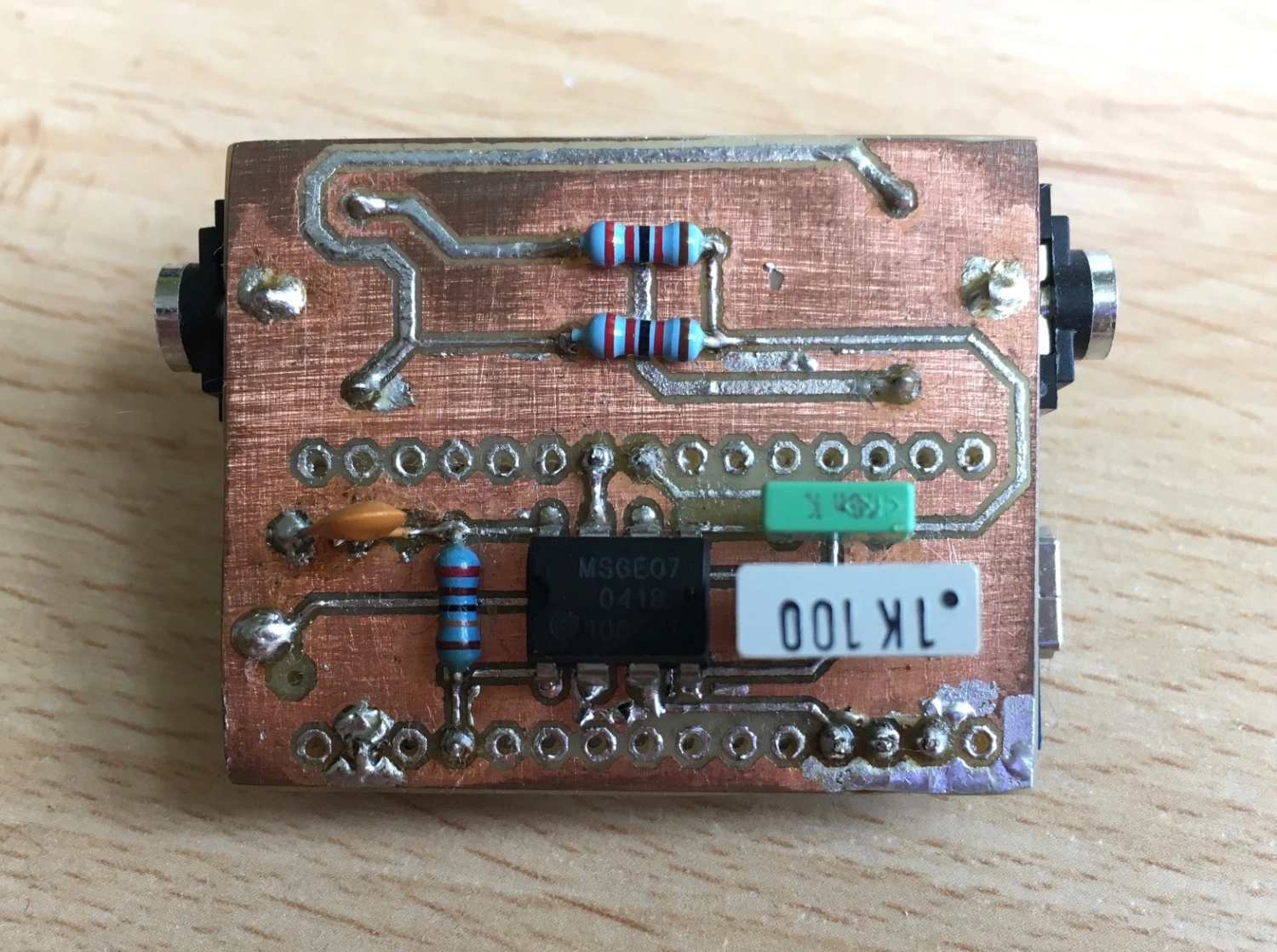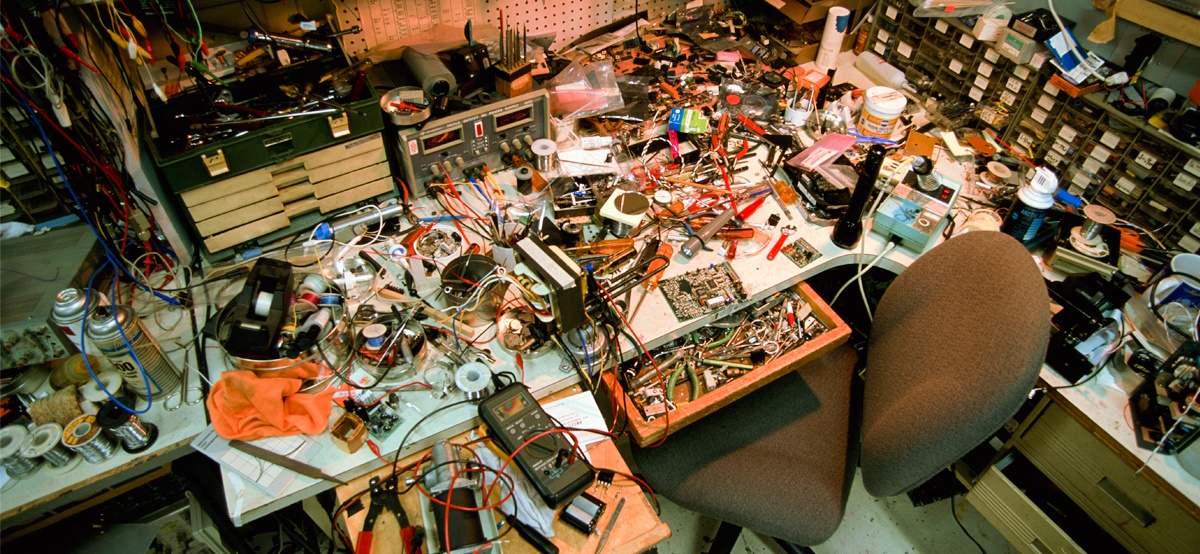

-
As a novice at soldering, I now have an opinion about single-sided vs. double-sided breadboards
Me a few days ago, shopping on Amazon: "All the component and jumper wire leads are going to be on the bottom anyway; why shouldn't I get a pack of single-sided breadboards for $6.25 instead of double-sided ones for $10?"
Me today, after having lifted three pads off the damn board in 10 minutes: "Oh, that's why."
Get the double-sided breadboards; they're worth it.
-
Back in the saddle.
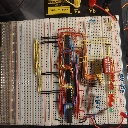
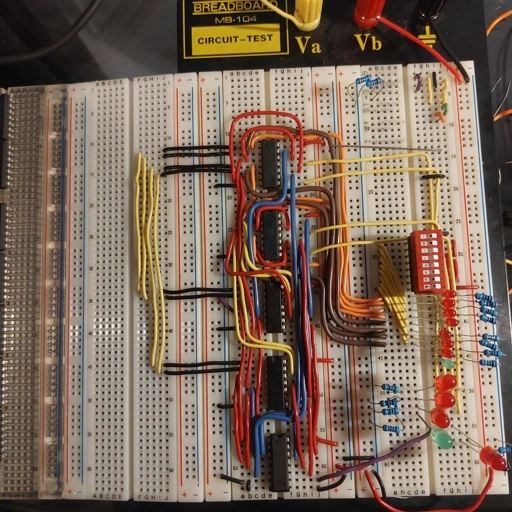
4 bit adder. Took me a few evenings this week to put together. Im quite happy that it worked first try without any bugs. Constructive criticism is encouraged.
-
Tips and tricks for beginners
Im just getting back into building circuits on my breadboard and I want to know if there are any tips from the pros on here to help me on my journey. Also some links to resources for projects would be nice.
-
Iron based copper
Video
Click to view this content.
Cheap Chinese devices have iron instead of copper in wires. Aluminium is not suitable, since you can't solder it, otherwise I'm sure they'd use that as well.
Don't be fooled if the strands are copper colored, that could be either varnish or a thin layer of electroplated copper. A magnet test will reveal the truth. If it can't be soldered, it's most probably Aluminum. I've seen that as well, but only on wires that use some sort of a clamp-on connector at both ends... basically, it was never meant to be soldered.
-
Yes, the blue rectangle at 0:30 is an arduino uno
Video
Click to view this content.
i couldn't upload a video so it's a link
-
Workbench tale: Resurrection of a dead Emlid Reach RS+ due to extremely low battery

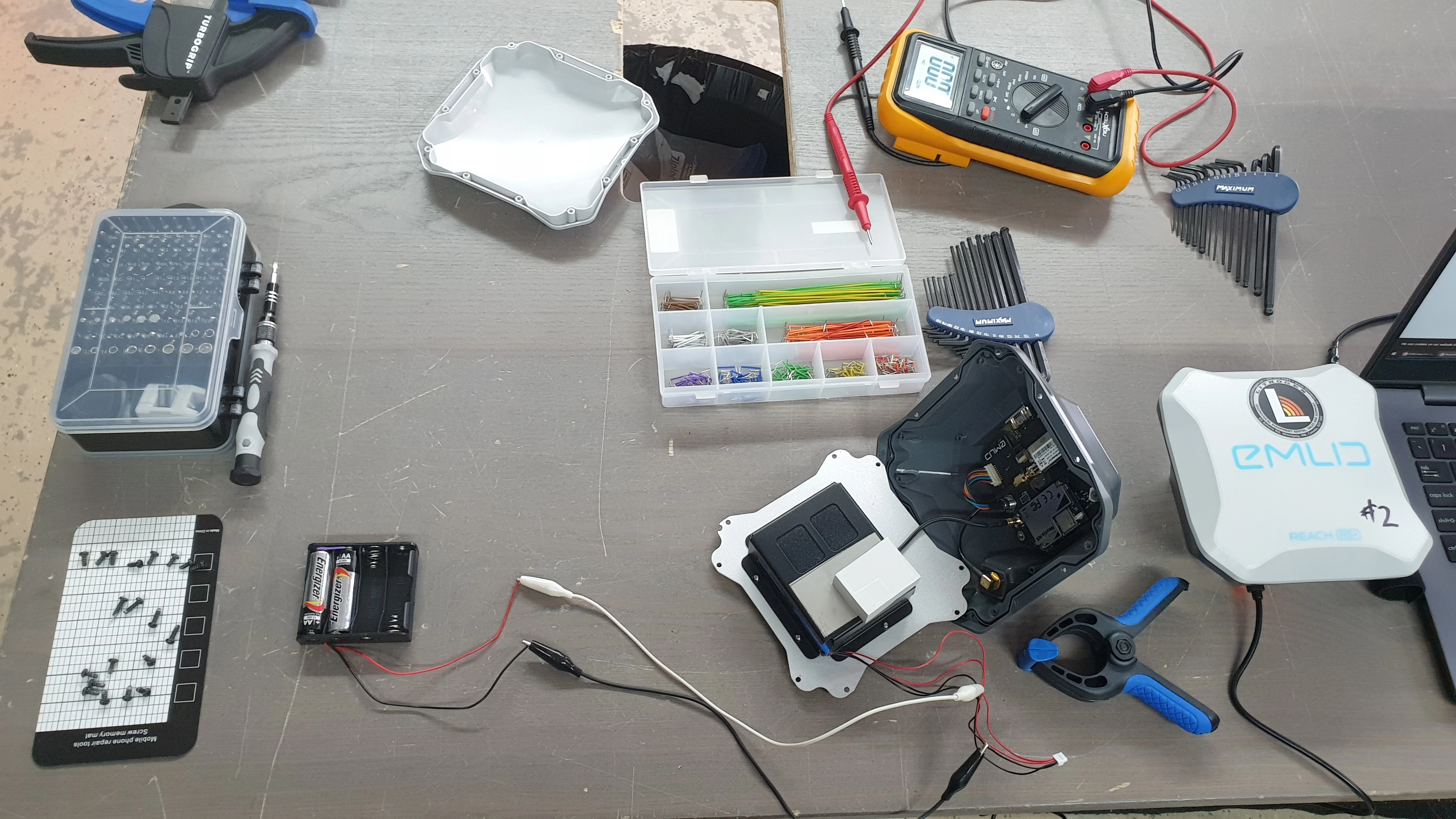
We maintain a small fleet of RTK GPS systems (Emlid Reach RS+ units or similar). But sometimes they sit too long on the shelf and parasitic drain kicks in. The manufacturer recommends recharging every three months, but ooops, this one went too long. If the batteries are too low, the battery management system (BMS) won't charge the batteries at all when you attach the USB charger cable. In this case, the batteries were testing at 0.9V rather than the desired 3.4V.
Solution: open the device, expose a tiny bit of conductor on the battery harness, and attach 3V worth of alkaline batteries for a short period. Once the lithium batteries are up a little, you can then charge with the normal USB charger again.
The manufacturer does not recommend opening the sealed unit, as it voids the IP67 rating. And this is not a best practice. But it works. The above photos were taken in April and the unit has been trucking along ever since. Saved a few thousand dollars :)
-
Opened an old scientific instrument to see if it works...

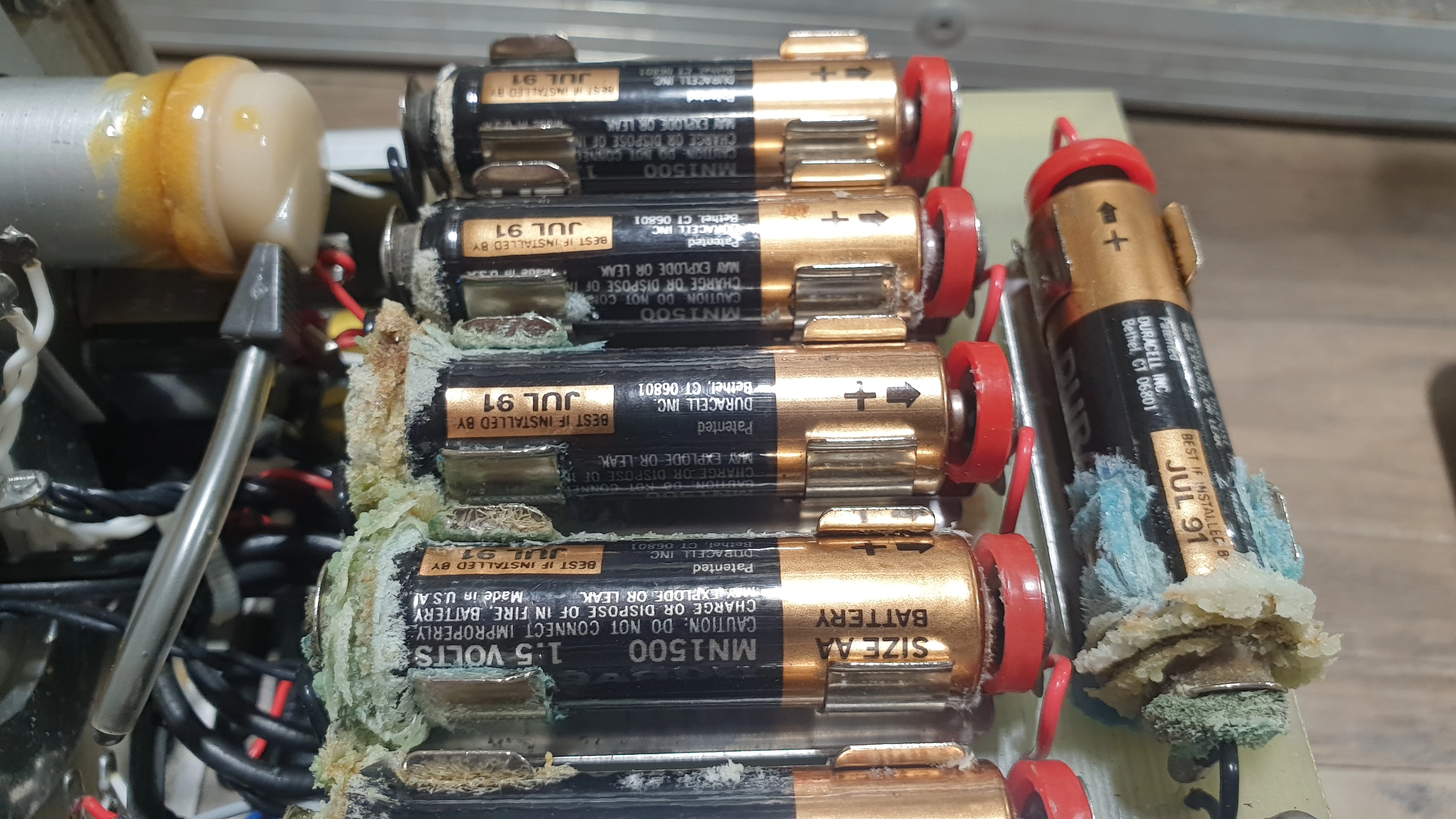
Instrument is a Geonics EM16 VLF receiver, using in the mineral exploration industry to find buried linear conductors.
-
Water Reactive EL Panels
YouTube Video
Click to view this content.
I got my hands on some really weird EL panels and did a little dive into how they work. I still have no idea where to get more but I think they may be DIY-able.
-
Open Source 3D printed mouse, built today
Built out my ploopy mouse today, it's been sitting on my shelf for a while. I got the self-assembly kit, had to solder on one through hole component.
So far I'm enjoying the mouse, the right mouse button is a little sticky, but I'm sure with a little readjustment it'll fall into place.
Every part of this mouse is open source, the hardware files, the PCB, the schematic, the firmware which is QMK. There's a lot to love here.
I've been playing some video games, and so far I enjoy the mouse quite a bit.
If I do have one complaint it would be the central scroll wheel doesn't have a detent, but that might just take some getting used to
I would love to see a kinesis style pinch mouse like the DXT2.
@pronk@mastodon.social @PKL@mastodon.social Great device, thank you for making it open source.
Note: I ordered their USB cables, just for solidarity, and assuming they found a cable that was very effective for a mouse, the cables I received were very strong, too stiff really to be used for a mouse cable. Luckily I had some very flexible braided USB cables already. So if you're going to order from them do not order the USB cable
-
Applied Science - Micronics SLS nylon 3D printer makes electronic circuits
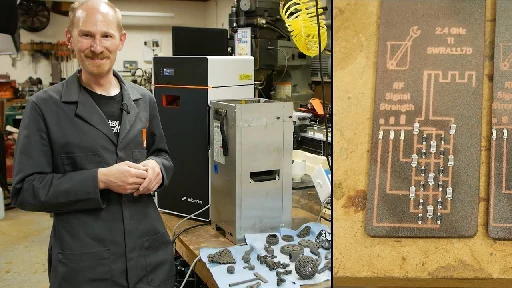
YouTube Video
Click to view this content.
A banger video about applying sintered traces to 3d printed models... BUT more interesting then that is the use of ChatGPT to "exfiltrate" unpublished formulas for the cooper plating solution.
In the video at 8:10 Ben goes through his exhaustive search of trying to make a solution that would work, and details that all the labs keep it more or less a secret, but the application of a LLM revealed the difficult to find steps/formula needed.
Obviously ChatGPT gobbled this up somewhere... just published on the internet but Ben didn't find it? Or did ChatGPT get trained on internal/corporate documents and the LLM is actually democratizing this information?
-
Hello everybody
I'm nowhereman from Belgium. Thanks for accepting me! Just started with electronics. Messing around a bit with motherboards. My 'new' secondhand motherboard got hit by the ground a think whilst in transport. And when I plugged it in some chips burned. The board didn't look like it would do that. Only the corner was hit so I thought it would be fine. I was wrong. But, because of that I wanted to learn about what went wrong.
-
PSA: Buy some LED Christmas lights today
I got a Sylvania-branded strand of 50 "warm-white" LEDs (plus two loose spares) for USD 2.50 at the local grocery store, which I'm pretty sure is cheaper than buying a bag of the bare LEDs would run. They also come in other colours (blue, cool-white, bright red, multicolour)
The individual LEDs come in plastic shells which can be cracked open to retrieve the goodies inside, and have plenty long leads that are folded over to fit the "bulb" mounting.
-
Got my electric cooler box working again 😁

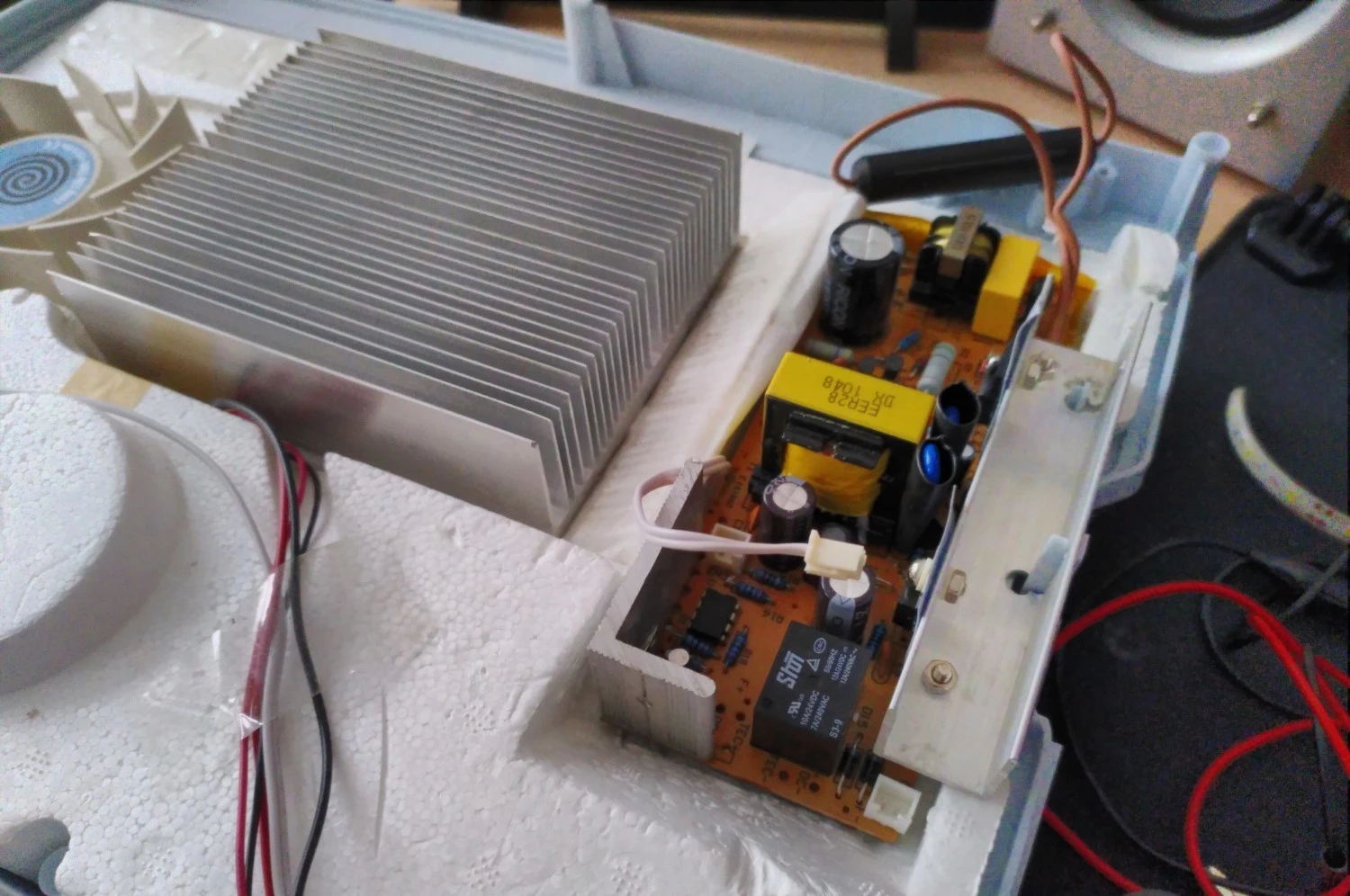
This decade old electric cooler box gave up the ghost around 2 years ago, with the indoor outlet plug no longer working. The independent 12v input was still operational, so I kept it with the intention of eventually fixing it...
And two years later, this is the eventually 😅. The integrated 10v ~45w unit had failed short on the primary side, with a burnt out Y-capacitor and some fried zeners. I started removing bits from the board to try and find all the broken components... but ended up letting out the magic smoke in the process, oops!
I set out looking for a new power supply, and came across a 12v 45w unit from Meanwell. It was actually smaller than the cooler's original power supply too, meaning more internal space to use later 🤫
After searching for a distributor that was actually willing to ship it to a home address, I ordered, and boom:
It's so tiny compared to the original.
Next I installed an Arduino Nano to control the TEC/peltier module & fan via a cheap LED repeater. I was hoping to reuse the internal temperature sensors, but left them disconnected for now
After hours writing the arduino code, I finally got it into a usable state. There were issues with brownouts rebooting the Arduino, however with the Meanwell supply in-circuit those mysteriously stopped.
There are 3 power modes now for the module: 30W, 40W and 50W - with the first two using PWM, and the last one giving it all the beans. I wanted to PWM control the fan too, but decided against it since it sounded absolutely terrible at whatever PWM frequency the Nano is using.
It powers on to 40W by default, which is under the 45W max rating of the PSU.
Everything looks good so far running from the bench supply:
Now all that was left was to connect the internal supply, and the 12v vehicle input. I was actually supposed to use JST connectors for the Meanwell psu, but didn't have anything on hand - so improvised with crimping spade terminals and friction fitting those on
And the moment of truth. Up until this point I hadn't actually checked if the replacement psu was working or not
Looking good! I don't really like the LEDs though, so might do something about those in future.
You might be wondering how exactly I change the power settings... well since the manufacturer decided it was good enough to shove all the cables in the back, I did the same with a pushbutton 🤫
Glad to have the electric cooler working again though, feels nice to save large things like this from going to the landfill and extend their life a bit. Excited to hear any thoughts and feedback!
-
lovely video, absolutely batshit idea: portable magnetron

YouTube Video
Click to view this content.
-
in your household, there is a chip you can easily decap. Can you guess what it is?


Transcript
Low-quality photo of a cleanly decapped chip with no resin around it, lying in a recessed rectangle in black plastic or ceramic. It is protected with some clear coat, and there are gold bond wires connecting it with 14 pins embedded in the package material. Two of them on opposing sides are connected and form a bed that the die.A structured square takes up most of the left half of the die and appears significantly darker. The rest is usual chip design with minor rectangular structures. The second photo uses crappy dusty lenses instead of digital zoom. It is slightly less cropped so it is revealed that the entire thing is within a deeper recess, possibly with a tab that keeps a cover on?
I don't have a camera better than my phone, sorry, and the magnifying glasses did not really help.
The pics are purposefully cropped to make the guessing a little harder. The chip continues to work now that I’ve undone this.
You may ask follow-up questions. I will post the full story and pics once you guess correctly.
Please use the spoiler syntax for your guesses so that people can enjoy guessing with follow-up hints without spoilers!You really don't like doing this, apparently. I thought it would make it more fun for people to take a guess even after someone guesses correctly.I will do the same with any hints and answers I post in the comments so that everyone can choose the difficulty.
-
Bought my first "bench" power supply 😁

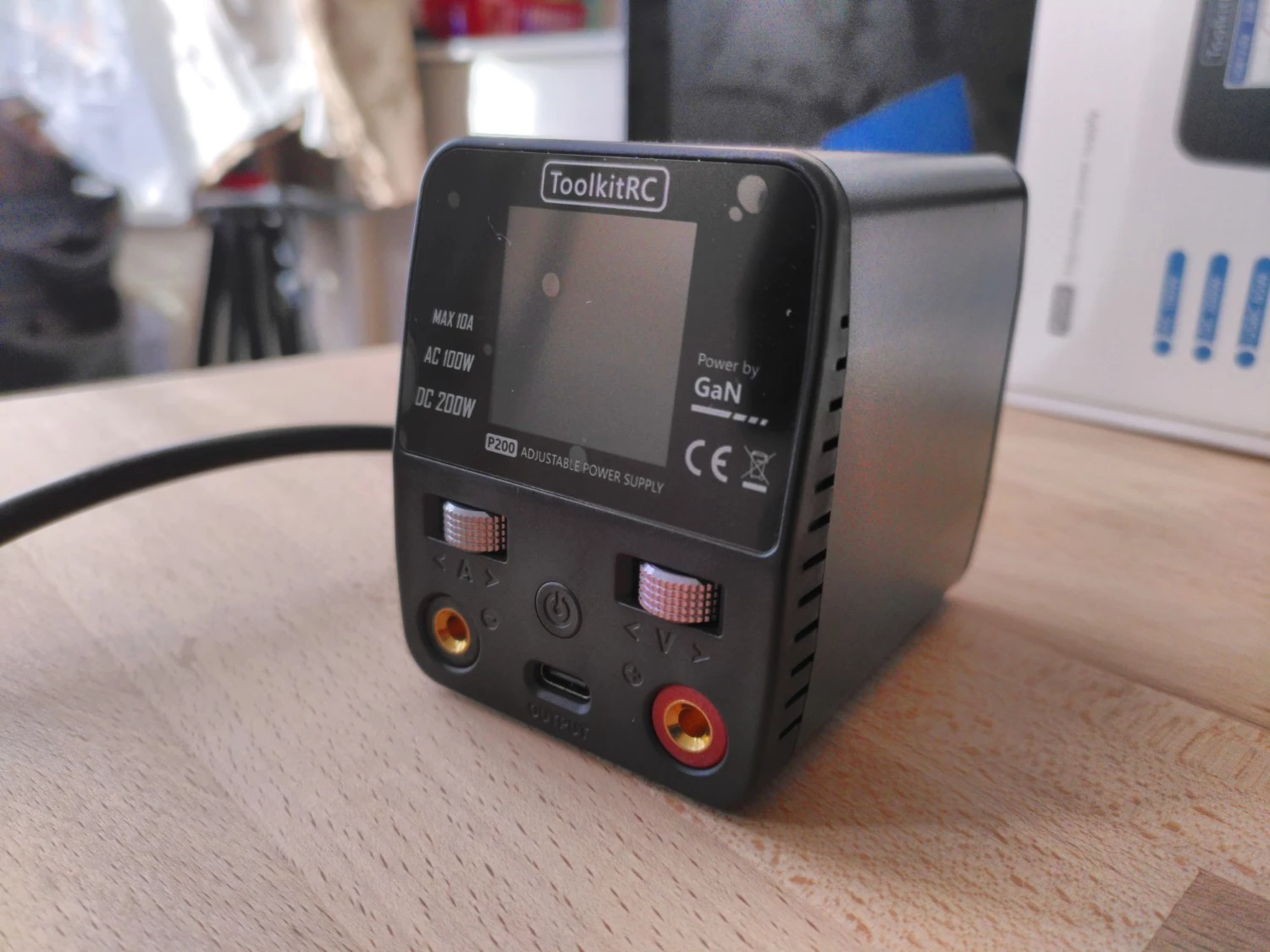
I've been in need of a bench supply for a while, up to this point I've been using little buck/boost boards with a multimeter to get the voltage I want when working on a project. The limitations of that started to show though, so I was after a more ideal solution.
After spending a while looking at various power supplies, I happened to come across this tiny adjustable supply. After binging a bunch of videos on it, I decided it'll do, especially compared to the absolutely chonky big alternatives.
Right out the gate, the aluminium casing feels amazing, but they could do with a bit of a stronger adhesive holding the glass screen cover in-place 🤦♂️ I'm personally not too bothered by this, but it doesn't set a good first impression IMO
A few seconds after pressing the glass back into place, the opposite end of the glass popped loose. At least I now know there are screws hidden under here if I ever decide to open this in future 💭
Aside from that, it has pretty reasonable specs for the size:
- Dual input, either AC (mickey ears plug) or DC 7-28v (XT60)
- 30V 10A (max output 200W on DC, max 100W on AC)
- Minimum output 1v 500mA
- 65W USB PD output (handy for the Pinecil I recently ordered to replace my old iron 😁)
- 200x200 IPS display
- AC input uses GaN parts
When watching the videos a few people complained about the absence of an XT60 to banana jack. This may have changed at some point, as one came with mine
The internal AC converter appears to supply 19V into the unit, which you can use via the XT60 connector at the rear. Not sure if intentional or not, but pretty neat nonetheless - as long as you dont accidentally leave a lipo plugged in there 😳
I'm not sure if its worth the price tag ($60-120 depending on where you look) when you can get a RuiDeng clone for under $30. I mainly jumped for this because of the size, integrated AC input, and that 65W USB-C. Voltage ripple is a little concern at lower voltages where some components may not be so forgiving...
Happy with the purchase so far though, can't wait to start using this for projects!
-
MOT spot welder / discussion

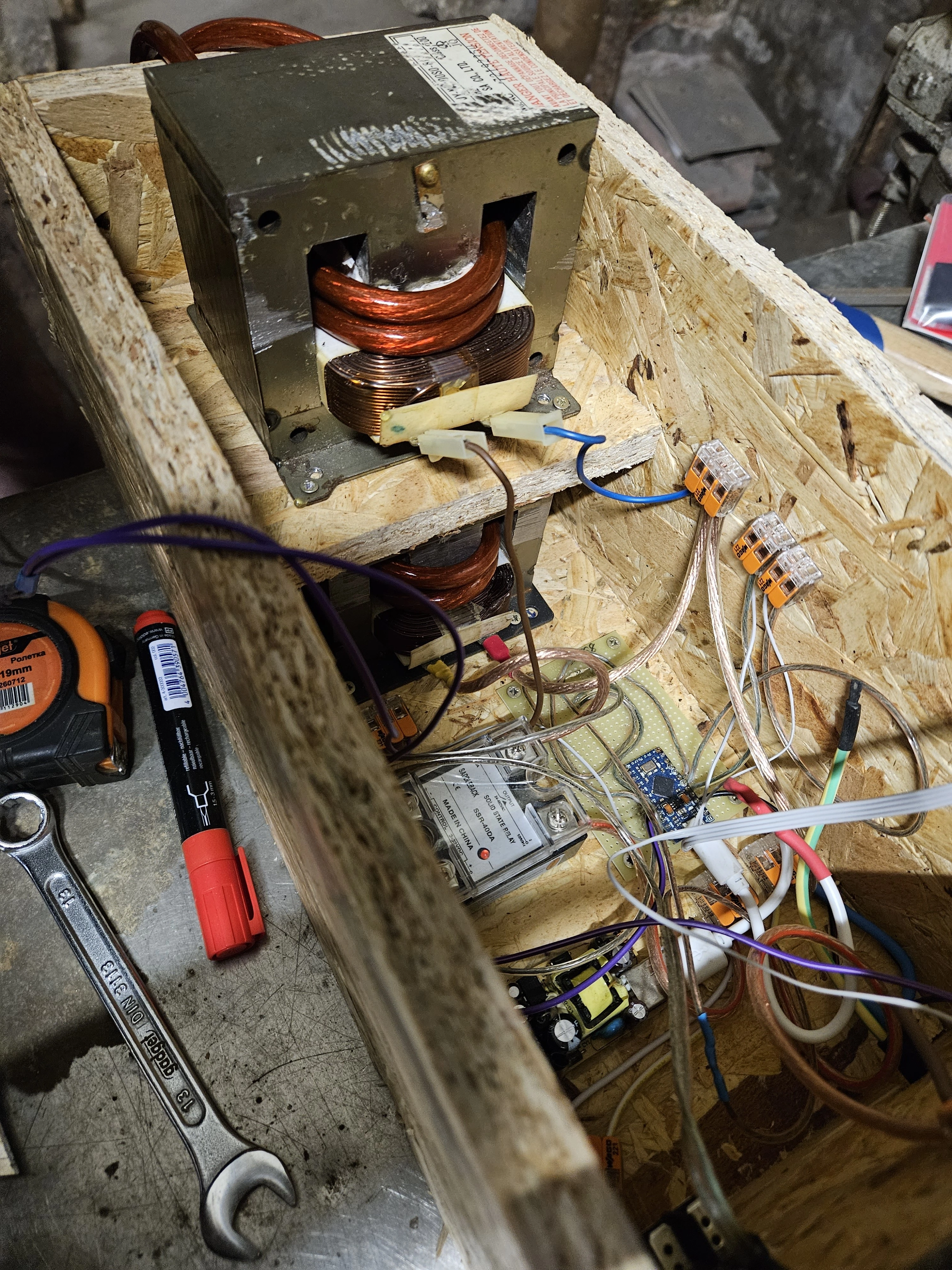
Would anyone like to chime in. I recently made an MOT spot welder for 18650 nickel strips. I can reliably weld 0.2mm nickel. Although I do need a slit if I'm doing nickel <--> nickel (stacking for more amps).
My main problem here is that I had to use 2 parallel transformers since I can't source a single more powerful one e.g. 1500w
The current ones are around 700 and 900 watts. Together, they manage around 20 amps from the wall 220v, that's about north of 4kW, so I'm guessing 2000 amps at 2 volts in theory.
In practice, I'm probably closer to 1000 amps due to heat and smaller electrode tips near the end for the spots.
Any ideas if raising my voltage to 4 volts would help with welds? I might also switch out my SSR since it seems to be sagging on that end. I measure more amps on the free directly connected cable from time to time, versus the one coming from the SSR.
Edit: The cables on the secondary windings are 16mm2 or around 6AWG. I'm confident they can handle the load since I can't really feel any heat in them. They barely heat up after 5 seconds of a constant short. I'm doing mostly 50-60ms pulses for the welds.
-
My customisable solar hot water system controller (project in progress)
Hi all,
In an effort to liven up this community, I'll post this project I'm working on.
I'm building a solar hot water controller for my house. The collector is on the roof of a three-storey building, it is linked to a storage tank on the ground floor. A circulating pump passes water from the tank to the collectors and back again when a temperature sensor on the outlet of the collector registers a warm enough temperature.
The current controller does not understand that there is 15 metres of copper piping to pump water through and cycles the circulating pump in short bursts, resulting in the hot water at the collector cooling considerably by the time it reaches the tank (even though the pipes are insulated). The goal of my project is to read the sensor and drive the pump in a way to minimise these heat losses. Basically instead of trying to maintain a consistent collector output temp with slow constant pulsed operation of the pump, I'll first try pumping the entire volume of moderately hot water from the top half of the collector in one go back to the tank and then waiting until the temperature rises again.
I am using an Adafruit PyPortal Titano as the controller, running circuitpython. For I/O I am using a generic ebay PCF8591 board, which provides 4 analog input and a single analog output over an I2C bus. This is inserted into a motherboard that provides pullup resistors for the analog inputs and an optocoupled zero crossing SCR driver + SCR to drive the (thankfully low power) circulating pump. Board design is my own, design is rather critical as mains supply in my country is 240V.
The original sensors are simple NTC thermistors, one at the bottom of the tank, and one at the top of the collector. I have also added 4 other Dallas 1-wire sensors to measure temperatures at the top of tank, ambient, tank inlet and collector pump inlet which is 1/3rd of the way up the tank. I have a duplicate of the onewire sensors already on the hot water tank using a different adafruit board and circuitpython. Their readings are currently uploaded to my own IOT server and I can plot the current system's performance, and I intend to do the same thing with this board.
The current performance is fairly dismal, a very small bump of perhaps 0.5 - 1 deg C in the normally 55 degree C tank temperature around 12pm to 1pm, and this is in Australia in hot spring weather of 28-32 degrees C.(There's some inaccuracy of the tank temperatures, the sensors aren't really bonded to the tank in any meaningful way, so tank temp is probably a little warmer than this. But I'm looking for relative temperature increases anyway)
Right now , the hardware is all together and functional, and is driving a 13W LED downlight as a test, and I can read the onewire temp sensors, read an analog voltage on the PCF8591 board (which will go to the NTC sensors), and I'm pulsing the pump output proportionally from 0-100 percent drive on a 30 second duty cycle, so that a pump drive function can simply say "run the pump at 70 percent" and you'll get 21 seconds on, 9 seconds off. Duty cycle time is adjustable, so I might lower it a bit to 15 or 10 seconds.
The next step is to try it on the circulating pump (which is quite an inductive load, even if it is only 20 watts), and start working on an algorithm that reads the sensors and maximises water temperature back to the tank. There are a few safety features that I'll put in there, such as a "fault mode" to drive the pump at a fixed rate if there is a sensor failure, and a "night cool" mode if the hot water tank is severely over temperature to circulate hot water to the collector at night to cool it. There are the usual overtemp/overpressure relief valves in the system already.
All this is going in a case with a clear hinged cover on the front so I can open it and poke the Titano's touchscreen to do some things.
Right now I am away from home from work, so my replies might be a bit sporadic, but I'll try to get back to any questions soon-ish.
A few photos for your viewing pleasure:
The I/O and mainboard plus a 5V power supply mounted up: !
The front of the panel, showing the Pyportal: !
Thingsboard display showing readings from the current system: !

